
A Fire Upon the Deep is a 1992 science fiction novel by American writer Vernor Vinge, a space opera involving superhuman intelligences, aliens, variable physics, space battles, love, betrayal, genocide, and a conversation medium resembling Usenet. A Fire Upon the Deep won the Hugo Award in 1993, sharing it with Doomsday Book by Connie Willis.

Time for the Stars is a juvenile science fiction novel by American writer Robert A. Heinlein, published by Scribner's in 1956 as one of the Heinlein juveniles. The basic plot line is derived from a 1911 thought experiment in special relativity, commonly called the twin paradox, proposed by French physicist Paul Langevin.

Methuselah's Children is a science fiction novel by American writer Robert A. Heinlein, originally serialized in Astounding Science Fiction in the July, August, and September 1941 issues. It was expanded into a full-length novel in 1958.
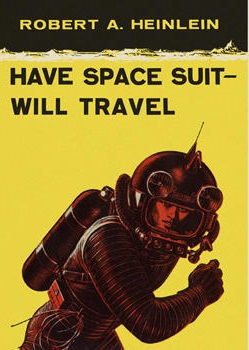
Have Space Suit—Will Travel is a science fiction novel for young readers by American writer Robert A. Heinlein, originally serialised in The Magazine of Fantasy & Science Fiction and published by Scribner's in hardcover in 1958. It is the last of the Heinlein juveniles.
A sleeper ship is a hypothetical type of crewed spacecraft in which most or all of the crew spends the journey in some form of hibernation or suspended animation. The only known technology that allows long-term suspended animation of humans is the freezing of early-stage human embryos through embryo cryopreservation, which is behind the concept of embryo space colonization.
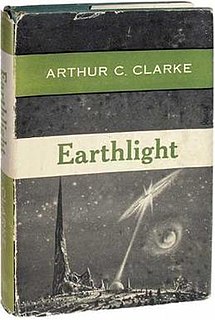
Earthlight is a science fiction novel by British writer Arthur C. Clarke, published in 1955. It is an expansion to novel length of a novella of the same name that he had published four years earlier.

The High Crusade is a science fiction novel by American writer Poul Anderson, about the consequences of an extraterrestrial scoutship landing in Medieval England. Poul Anderson described the novel as "one of the most popular things I've ever done, going through many book editions in several languages."

Exultant is a science fiction novel by British author Stephen Baxter. It is part two of the Destiny's Children series. The book was published by Victor Gollancz Ltd in September 2004.

Non-Stop is a 1958 science fiction novel by Brian Aldiss. It was the author's first novel. Originally published by Faber & Faber, it was published in the U.S. by Criterion Books as Starship in 1959. The novel has been frequently republished in the UK and US and translated into French, German, Danish and other languages. The Signet and Avon US paperback editions were also published under the title Starship, but American publishers Carroll & Graf and Overlook Press have used the title Non-Stop.
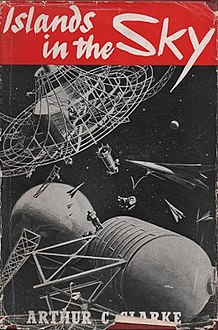
Islands in the Sky is a 1952 science fiction novel by British writer Arthur C. Clarke. It is one of his earliest works. Clarke wrote the story as a travelogue of human settlement of cislunar space in the last half of the twenty-first century.

Revolt on Alpha C is a juvenile science fiction novel by American writer Robert Silverberg, published by Crowell in 1955. It was Silverberg's first published book.
Galaxies other than the Milky Way are popular settings for creators of science fiction, particularly those working with broad-scale space opera settings. Among the most common settings are the Andromeda Galaxy, the Magellanic Clouds, and the Triangulum Galaxy, all part of the Local Group close to the Milky Way, and in the cases of Andromeda and Triangulum the Local Group's two largest other galaxies. The difficulties involved in crossing the immense distances between galaxies are often overlooked in this type of science fiction.
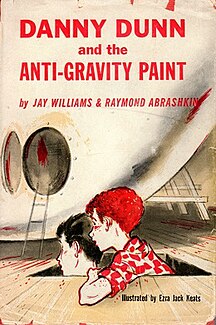
Danny Dunn and the Anti-Gravity Paint is the first novel in the Danny Dunn series of juvenile science fiction/adventure books written by Raymond Abrashkin and Jay Williams. The book was first published in 1956 and originally illustrated by Ezra Jack Keats.

Danny Dunn on the Ocean Floor is the fifth novel in the Danny Dunn series of juvenile science fiction/adventure books written by Raymond Abrashkin and Jay Williams. The book was first published in 1960.

The Survivors is a science fiction novel by American writer Tom Godwin. It was published in 1958 by Gnome Press in an edition of 5,000 copies, of which 1,084 were never bound. The novel was published in paperback by Pyramid Books in 1960 under the title Space Prison. The novel is an expansion of Godwin's story "Too Soon to Die" which first appeared in the magazine Venture.
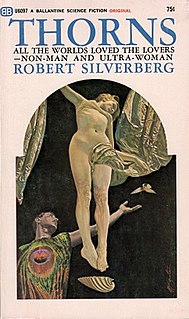
Thorns is a science fiction novel by American author Robert Silverberg, published as a paperback original in 1967, and a Nebula and Hugo Awards nominee.
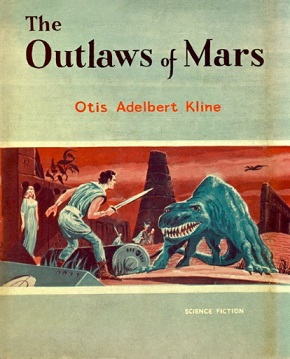
The Outlaws of Mars is a science fiction novel by Otis Adelbert Kline in the planetary romance subgenre pioneered by Edgar Rice Burroughs. It was originally serialized in seven parts in the magazine Argosy beginning in November 1933. It was first published in book form in 1961 in hardcover by Avalon Books in 1961; the first paperback edition was issued by Ace Books in the same year. Later trade paperback editions were published by Pulpville Press in November 2007 and Paizo Publishing in May 2009.

Galactic Derelict is a science fiction novel by American writer Andre Norton, the second in her Time Traders series. It was first published in 1959, and as of 2012, had been reprinted in eight editions. It is part of Norton's Forerunner universe.
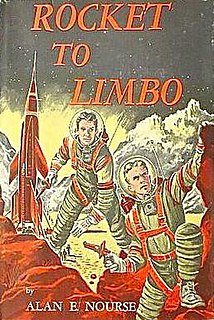
Rocket to Limbo is a 1957 science fiction novel by Alan E. Nourse. It was first published in book form by David McKay Co., Inc, and was later incorporated into an Ace Double. It first appeared in the October 1957 issue of Satellite Science Fiction.






















